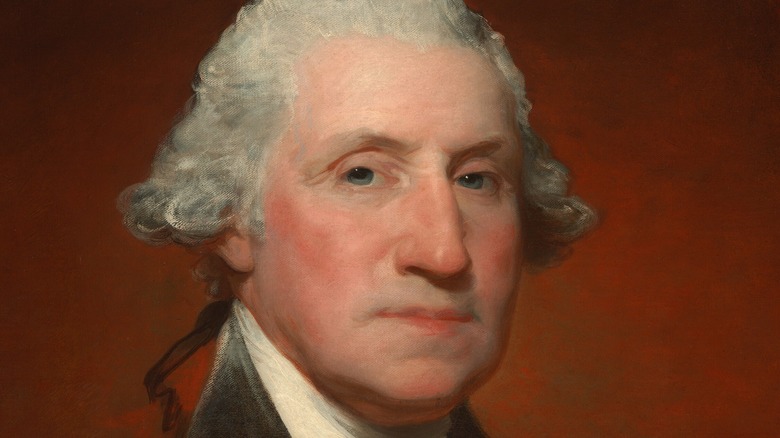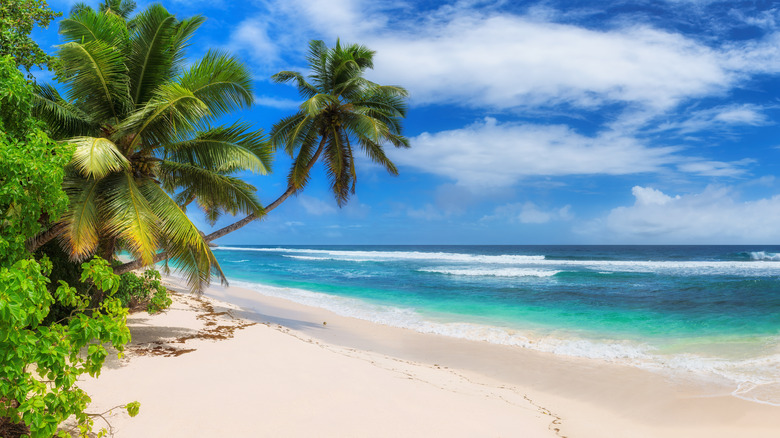How A Trip To Barbados Changed George Washington's Life
Future founding father George Washington was only 19 years old when he traveled to Barbados in 1751. He made his first trip abroad in the company of his older half-brother Lawrence, and they braved the dangers of sailing during hurricane season on Lawrence's behalf (via the Miller Center). Lawrence Washington was in declining health, possibly suffering from tuberculosis. He hoped that the tropical climate of Barbados would improve his condition.
The Washington brothers arrived in Barbados on November 2, 1751, according to Mount Vernon. While in Barbados, Washington had a chance to move in some elite social circles there, thanks to his brother. But it was at a gathering at the home of Gedney Clarke, a wealthy and influential merchant, George was exposed to smallpox (via History). A short time later, he came down with the disease, which causes intense fever, muscle aches, and a blistering rash.
George Washington fortunately recovered from his bout of smallpox, but the experience would influence his life later on. He returned to Virginia after only seven weeks on Barbados. When he got back, he went to deliver some letters to Robert Dinwiddie, the governor of Virginia (via the National Archives). He dined with Dinwiddie and must have made a good impression on the colonial leader. In 1752, Dinwiddie appointed Washington to serve as one of his district adjutants, a military administrative post.
Washington's illness in Barbados prepared him for war
During the Revolutionary War, General George Washington had to battle both the British and smallpox (via History). He had immunity from his earlier case of the disease, but that wasn't the same for most of his troops. And the British had an advantage as many of their soldiers already had immunity from the disease from surviving smallpox earlier in their lives. So the British benefited from herd immunity while the Americans were especially vulnerable to this disease. British exploited this situation during their occupation of Boston in 1775 by sending infected people out into the streets to spread the disease, according to Mount Vernon.
An outbreak of smallpox among Americans during the Battle of Quebec in December of 1775 forced the Americans to retreat, per History. As the war pressed on, Washington made the decision to inoculate his troops. In early 1777, all new recruits were immunized through a process called variolation, which involved placing a thread covered in pus from a smallpox sore under the skin. The program proved so successful that Washington ordered another round of inoculations to be given during the winter of 1778 while his troops were stationed at Valley Forge.

